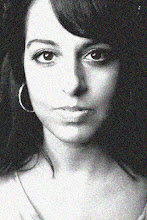Thursday, January 6, 2011
Triple Canopy Issue 10
Triple Canopy collaborates with artists and writers to create innovative, Web-based projects and recently launched “And Yet It Moves,” our tenth issue, featuring works by Nancy Spero, Matt Mullican, and Eve Sussman, among others. I think you and your readers may find the below projects particularly interesting:
Planetarium, by Matt Mullican
Mullican collaborated with artist and programmer Patrick Smith to create “Planetarium,” a navigable scale model of the solar system. The project deals with the experience and representation of unbounded space, which Mullican has been interested in since he first experimented with digital environments in 1991’s Five into One, a virtual city constructed in accordance with the artist’s personal visual vocabulary and cosmological order.
whiteonwhite, by Eve Sussman & Rufus Corporation
Sussman and her collective, the Rufus Corporation, collaborated with programmer Joshua Noble to create the online version of this “algorhithmic noir.” Whiteonwhite tells the story of Mr. Holz, who arrives in City A around 2016. The film employs an algorithm that draws upon a database of more than one thousand video clips, which are continuously edited together according to “tags” embedded into the voiceover, creating a unique experience with each viewing.
Notes in Time, by Nancy Spero with Christopher Lyon
Triple Canopy collaborated with Prestel editor-in-chief Christopher Lyon and programmer Seth Erickson to reanimate seminal artist Nancy Spero’s landmark 1979 work, Notes in Time. Notoriously difficult to exhibit, this 210-foot scroll (now in the collection of the Museum of Modern Art) is rarely on view. Here, viewers get the chance to engage with the work as the artist intended.
A Forcing of Barriers, by Per-Oskar Leu
“A Forcing of Barriers” is the story of a chance encounter between Arno Breker (1900-1991), Hitler’s “official state sculptor,” and Otto Freundlich (1878-1943), whose work was used to promote the infamous “Degenerate Art” exhibition of 1937. (Many of these works were recently excavated by German authorities and placed on view at the Neues Museum in Berlin.) The project picks up where the Guggenheim’s current “Chaos and Classicism” exhibition leaves off, examining the notion of “political art” through historical documentation and Leu’s own work.
Labels:
Art News
Subscribe to:
Post Comments (Atom)











No comments:
Post a Comment